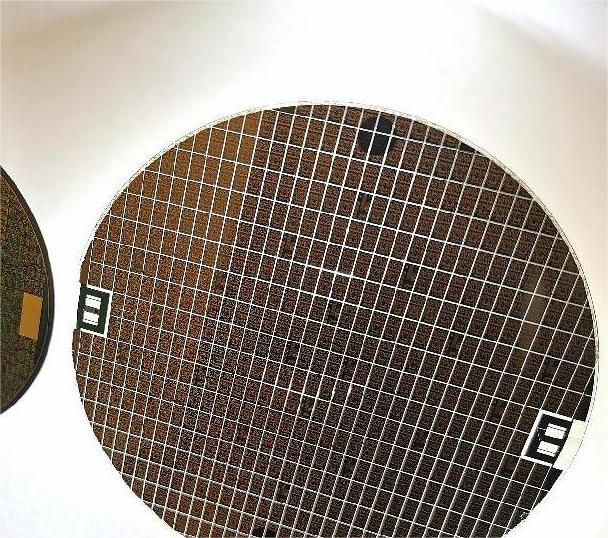
- English
- Español
- Português
- русский
- Français
- 日本語
- Deutsch
- tiếng Việt
- Italiano
- Nederlands
- ภาษาไทย
- Polski
- 한국어
- Svenska
- magyar
- Malay
- বাংলা ভাষার
- Dansk
- Suomi
- हिन्दी
- Pilipino
- Türkçe
- Gaeilge
- العربية
- Indonesia
- Norsk
- تمل
- český
- ελληνικά
- український
- Javanese
- فارسی
- தமிழ்
- తెలుగు
- नेपाली
- Burmese
- български
- ລາວ
- Latine
- Қазақша
- Euskal
- Azərbaycan
- Slovenský jazyk
- Македонски
- Lietuvos
- Eesti Keel
- Română
- Slovenski
- मराठी
- Srpski језик
Advantages and Disadvantages of Gallium Nitride (GaN) Applications
2024-02-20
As the world looks for new opportunities in semiconductors, gallium nitride continues to stand out as a potential candidate for future power and RF applications. However, for all the benefits it offers, it still faces a major challenge; there are no P-type (P-type) products. Why is GaN touted as the next major semiconductor material, why is the lack of P-type GaN devices a major drawback, and what does this mean for future designs?
In electronics, four facts have persisted since the first electronic devices hit the market: they need to be as small as possible, as cheap as possible, provide as much power as possible, and consume as little power as possible. Considering that these requirements often contradict each other, trying to create the perfect electronic device that can fulfil these four requirements is a bit of a pipe dream, but that hasn't stopped engineers from doing everything they can to make it happen.
Using these four guiding principles, engineers have succeeded in accomplishing a variety of seemingly impossible tasks, with computers shrinking from room-sized devices to chips smaller than a grain of rice, smartphones that allow wireless communication and access to the Internet, and virtual reality systems that can now be worn and used independently of the host computer. However, as engineers approach the physical limits of commonly used materials such as silicon, making devices smaller and using less power is now becoming impossible.
As a result, researchers are constantly searching for new materials that may be able to replace such common materials and continue to provide smaller devices that run more efficiently. Gallium nitride (GaN) is one material that has attracted a lot of attention, compared to silicon, for obvious reasons.
GaN's superior efficiency
First, GaN conducts electricity 1,000 times more efficiently than silicon, allowing it to operate at higher currents. This means that GaN devices can run at significantly higher power without generating much heat, and thus can be made smaller for the same given power.
Although GaN's thermal conductivity is slightly lower than silicon's, its thermal management advantages open up new avenues for high-power electronics. This is especially important for applications where space is at a premium and cooling solutions need to be minimised, such as aerospace and automotive electronics, and the ability of GaN devices to maintain performance at high temperatures further highlights their potential for harsh environment applications.
Secondly, the larger bandgap of GaN (3.4eV vs. 1.1eV) allows for use at higher voltages before dielectric breakdown. As a result, GaN is not only capable of delivering more power, but can do so at higher voltages while maintaining higher efficiency.
The high electron mobility also allows GaN to be used at higher frequencies. This factor makes GaN critical for RF power applications that operate well above the GHz range (something that silicon struggles with).
However, silicon is slightly better than GaN in terms of thermal conductivity, which means that GaN devices have greater thermal requirements than silicon devices. As a result, the lack of thermal conductivity limits the ability to shrink GaN devices when operating at high power (because large chunks of material are needed to dissipate heat).
GaN's Achilles Heel - No P-Type
It's great to have semiconductors that can operate at high power at high frequencies, but for all the advantages GaN offers, there's one major drawback that severely hampers its ability to replace silicon in many applications: the lack of P-types.
Arguably, one of the main aims of these newly discovered materials is to dramatically increase efficiency and support higher power and voltage, and there is no doubt that current GaN transistors can achieve this. However, while individual GaN transistors do offer some impressive properties, the fact that all current commercial GaN devices are N-type compromises their ability to be extremely efficient.
To understand why this is the case, we need to look at how NMOS and CMOS logic works. NMOS logic was a very popular technology in the 1970s and 1980s due to its simple manufacturing process and design. By using a single resistor connected between the power supply and drain of an N-type MOS transistor, the gate of that transistor is able to control the voltage at the drain of the MOS transistor, effectively implementing a non-gate. When combined with other NMOS transistors, it is possible to create all the logic components, including AND, OR, XOR and latches.
However, although this technique is simple, it uses resistors to provide power, which means that a lot of power is wasted on the resistors when the NMOS transistors are on. For a single gate, this power loss is minimal, but can increase when scaling to small 8-bit CPUs, which can heat up the device and limit the number of active devices on a single chip.





